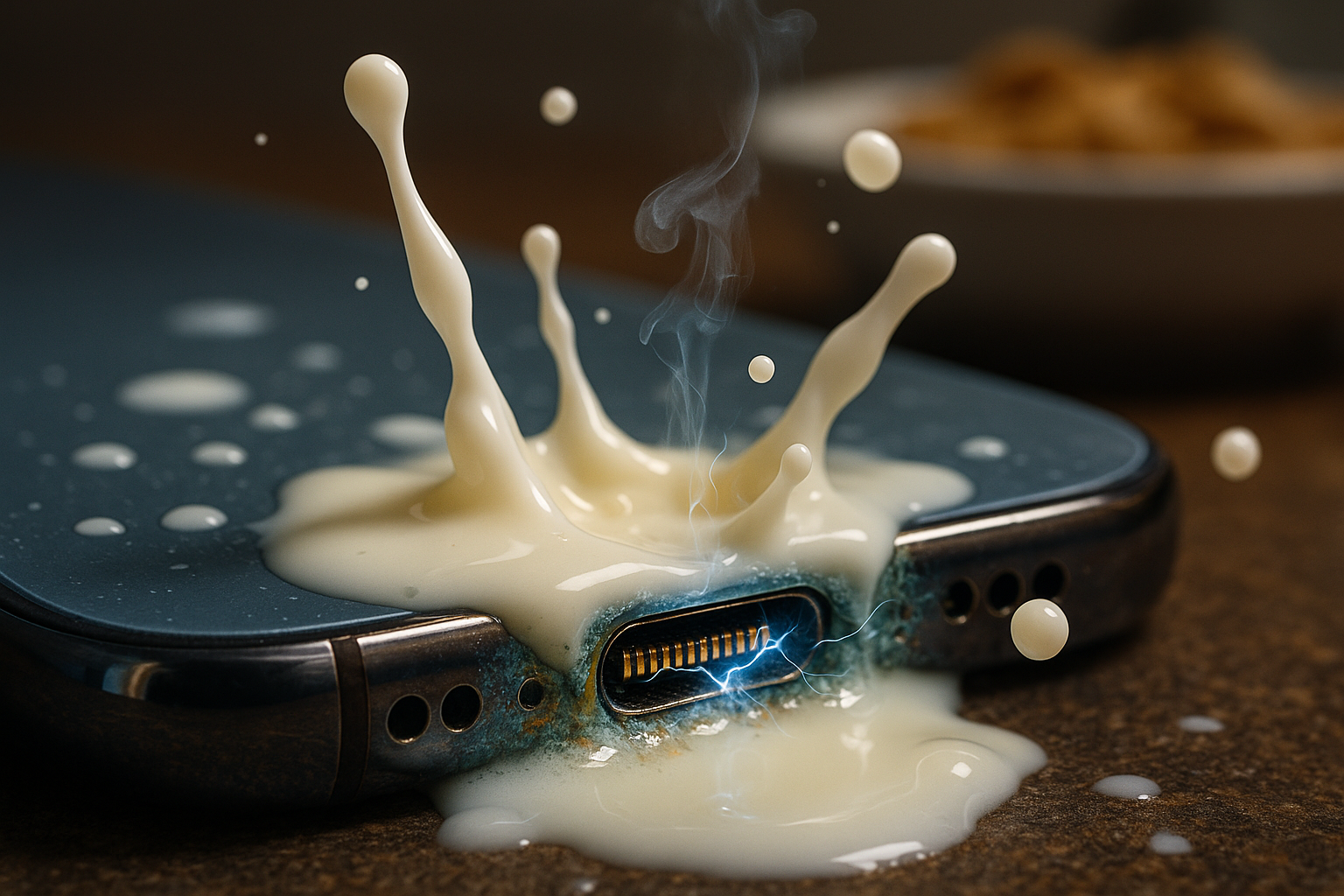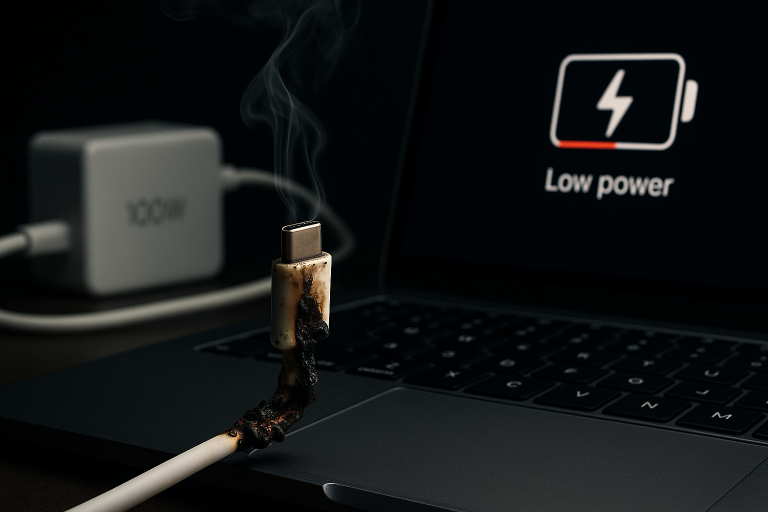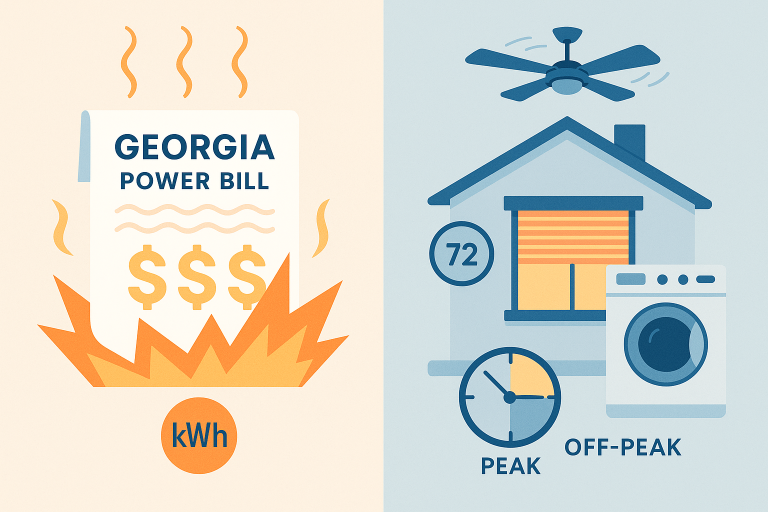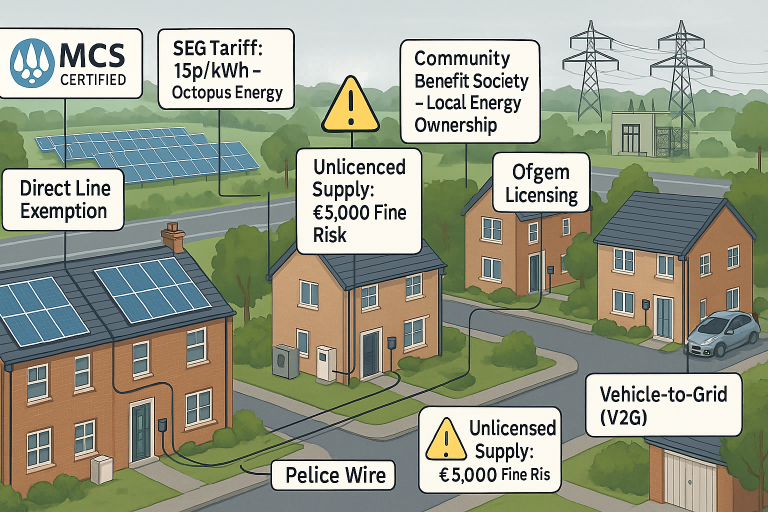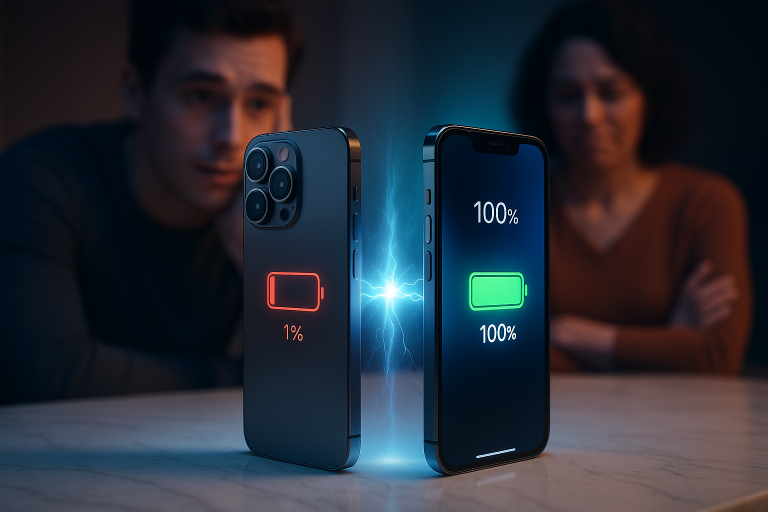Can Milk Damage Your Phone Charger? Bizarre Myths Tested
Key Takeaways
- Milk can cause immediate charging issues by creating physical blockages in ports
- The sugar and protein in milk lead to long-term corrosion and electrical damage
- Wireless charging offers an effective bypass for milk-damaged ports
- Professional cleaning is superior to DIY methods like rice drying
- Prevention strategies can save your devices from dairy disasters
Picture this common scenario: You’re enjoying your morning cereal when a sudden movement sends a splash of milk directly into your smartphone’s charging port. Panic sets in. Will your device survive?
While the internet is full of conflicting advice about liquid damage, milk presents unique dangers that plain water doesn’t. Although modern phones boast water resistance features, milk’s sticky composition creates problems that go beyond moisture alone.
This article separates tech fact from fiction, examining exactly how dairy products interact with our electronics and why your charger might be at greater risk than your phone itself.
How Milk Causes Damage: Beyond Simple Moisture
The Physical Blockage Problem
When milk enters your charging port, its first effect is physical obstruction. As it dries, the proteins and sugars form a cement-like substance that prevents proper cable connection.
One iPhone XR user discovered “dried milk stuck to the top of the inside of the charging port” after overnight drying, completely preventing charging functionality. This residue behaves differently than water, forming an insulating barrier that can’t be dislodged by simple drying techniques.
The viscosity of milk allows it to penetrate deeper into device components than water would, reaching areas like:
- Charging port pins
- Internal circuit boards
- Speaker grilles
- Camera mechanisms
Corrosion Chemistry
Milk’s corrosive potential stems from its complex chemical makeup:
| Component | Effect on Electronics |
|---|---|
| Lactose sugar | Creates sticky residues that attract dust and promote galvanic corrosion |
| Proteins | Denature when heated during charging, forming insulating deposits |
| Minerals | Calcium and magnesium ions create conductive pathways where they shouldn’t exist |
These components enable electrochemical reactions that eat away at copper traces and solder points. Unlike pure water, milk leaves behind organic compounds that continue causing damage long after the initial spill.
The corrosion process typically follows this timeline:
- Initial contamination (0-24 hours)
- Residue hardening (1-7 days)
- Early corrosion signs (1-2 weeks)
- Significant component degradation (1 month+)
Electrical Short Circuits
The moment milk enters a powered charging port, its ionic content creates unintended current pathways. One Huawei Mate 10 owner reported losing “Super fast charging” capability immediately after a milk spill, despite apparent drying.
This suggests voltage regulation circuits were compromised when milk created bridges between contacts designed to remain electrically isolated. The sugar content makes milk significantly more conductive than water, increasing short-circuit risks.
Key electrical impacts include:
- Voltage irregularities
- Current leakage
- Intermittent connections
- Complete circuit failure
Myth Testing: Separating Fact from Folklore
Myth 1: “Milk is Just Like Water for Electronics”
Reality: Dangerously Different
While both liquids threaten electronics, milk’s higher viscosity allows it to cling to components and leave residue after evaporation. A MacRumors forum member noted that after a chocolate milk spill, “the stickiness from the sugar poses its own problem versus just being water.”
Water resistance ratings (IP68) apply only to pure water – not dairy beverages containing sugars, proteins, and fats that create adhesive residues and promote corrosion.
Myth 2: “If It Still Works, You’re in the Clear”
Reality: Delayed Damage is Common
On iFixit’s forums, technicians warn that “liquids and electronics do not mix. Especially when there is also power involved. Your sister may be lucky that initially there may seem to be nothing wrong but that doesn’t mean there will be no further problems.”
Corrosion from milk residues progresses slowly, potentially damaging Power Management Integrated Circuits (PMICs) over weeks or months. These vital components regulate charging and cost $50-$150 to replace when damaged.
Myth 3: “Rice Drying Solves Everything”
Reality: Ineffective for Milk Residues
While rice might absorb moisture, it does nothing for milk’s sticky components. As one technician bluntly stated: “Rice is good to eat but does nothing to prevent corrosion inside a phone.”
Milk proteins require active removal with solvents, not passive drying. The rice method also allows residues to set during the extended drying period, making professional cleaning more difficult.
Table: Comparing Liquid Damage Mechanisms
| Liquid Type | Immediate Threat | Long-Term Threat | Residue Formation |
|---|---|---|---|
| Pure Water | Short circuits | Corrosion (low) | None |
| Salt Water | Severe short circuits | Rapid corrosion | Salt crystals |
| Milk | Moderate shorts | Severe corrosion | Sticky protein/sugar |
| Soda | Severe shorts | Extreme corrosion | Sugar syrup |
Real-World Damage Cases
The Chocolate Milk Disaster
When chocolate milk flooded an iPhone 11 Pro Max’s ports, the user initially thought water resistance would save it. Forum responses revealed divided opinions: some suggested rinsing with water, while others warned about sugar corrosion.
The original poster later reported charging irregularities – a classic sign of residue interfering with proper contact. Chocolate milk poses enhanced risks due to added sugars and cocoa particles that accelerate corrosion.
The “Working but Broken” Phenomenon
A Huawei Mate 10 user documented a particularly insidious case: after a milk spill, normal charging functioned but “Super fast charging” capability disappeared permanently.
An operating system update temporarily restored functionality, suggesting the milk residue created intermittent connections confusing the power management system. This case demonstrates how milk damage often manifests in subtle, intermittent ways rather than complete failure.
The Cemented Port Nightmare
Perhaps the most dramatic case involved an iPhone XR user who plugged in their device after a milk spill, only to wake up to a completely blocked port.
They described “dried milk stuck to the top of the inside of the charging port” that resisted removal attempts. Professional repair was needed to physically excavate the solidified dairy blockage.
Professional Insights: What Tech Repair Specialists See
Charger Port Damage Patterns
Repair technicians report consistent patterns with milk-damaged devices:
- Pitting corrosion: Visible under microscopes on charging port pins
- Residue buildup: Milky deposits inside ports and around charging ICs
- PMIC failure: Power Management Integrated Circuits damaged by electrical overloads
- Battery sensor faults: Milk conductivity causes false temperature readings
One repair blog notes, “When PMICs suffer damage due to overheating caused by contamination, the only remedy is replacement.” This $80-$150 repair often exceeds the value of older devices.
The Charger Itself Isn’t Immune
While focus often lands on the phone, wall adapters suffer too. Milk entering charger ports creates carbon tracks when electricity arcs through residue.
UGREEN’s research shows “faulty chargers may cause unstable voltage output eventually causing electric shock” – a serious safety concern. Dairy contamination inside chargers creates fire hazards that often necessitate replacement rather than repair.
Solutions: Saving Your Device Post-Spill
Immediate Response Protocol
- Unplug immediately: Stop current flow to prevent shorts
- Power down: Cut all electricity to the device
- Surface clean: Use compressed air (not blowing) to remove loose particles
- Solvent rinse: 90%+ isopropyl alcohol dissolves residues without conducting electricity
- Professional assessment: Have a technician inspect for hidden damage
As iFixit technicians emphasize: “The proper method is to disconnect the power source i.e. remove the battery and then clean and dry the complete phone, inside and out using Isopropyl Alcohol 90%+” For non-removable battery devices, this means professional disassembly.
When Charging Ports Fail: Alternatives
- Wireless charging: Qi-enabled phones (iPhone 8+) bypass ports entirely
- External battery cases: Provide power without using damaged ports
- Bluetooth adapters: Enable data transfer when USB fails
One iPhone XR user with a milk-clogged port concluded: “I’m thinking of just resorting to wireless charging” – an effective workaround for port damage.
Professional Cleaning Techniques
Repair shops use specialized methods:
- Ultrasonic cleaning: Dissolves residues from ports without physical contact
- Microscope-assisted scraping: Removes hardened deposits under magnification
- Contact replacement: Swapping damaged charging port components
- PMIC testing: Diagnosing power management chip damage from electrical overloads
Table: Cost Comparison of Milk Damage Repairs
| Repair Type | Average Cost | DIY Possible? | Effectiveness |
|---|---|---|---|
| Port Cleaning | $20-$50 | Not recommended | High for recent spills |
| Charging Port Replacement | $60-$120 | No | Permanent solution |
| PMIC Replacement | $80-$150 | No | Addresses electrical damage |
| Wireless Charger | $15-$40 | Yes | Bypasses damage |
Prevention: Keeping Your Tech Dairy-Free
Protective Accessories
- Port covers: Simple silicone plugs block debris
- Waterproof cases: Create milk-proof seals around ports
- Magnetic adapters: Convert ports to sealed magnetic connections
Charging Location Awareness
Avoid charging in:
- Kitchens during meal prep
- Dining tables during meals
- Bedside where nighttime drinks reside
Cable Management Strategies
- Use angled cables to position ports downward
- Implement wireless charging stations away from liquids
- Choose braided cables resistant to liquid wicking
Conclusion
Milk absolutely can damage phone chargers and charging ports – not through moisture alone, but via its sticky residues that create electrical hazards and progressive corrosion.
While water-resistant phones may survive brief immersion, milk’s sugars and proteins leave conductive deposits that degrade components over time. The most bizarre myth – that milk is harmless if the device still works – proves dangerously false, as damage often manifests days or weeks later.
Your best defenses include immediate alcohol cleaning, professional inspection for hidden damage, and transitioning to wireless charging when port damage occurs. Remember: when it comes to dairy and devices, prevention beats repair. Keep those lattes away from your electronics, and should disaster strike, skip the rice in favor of isopropyl alcohol and professional help.

